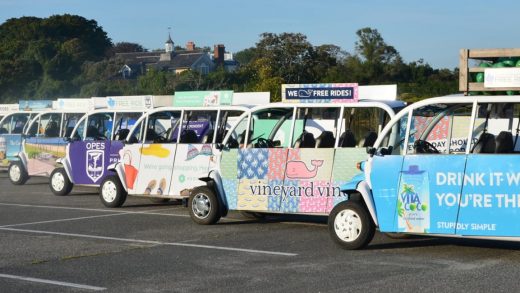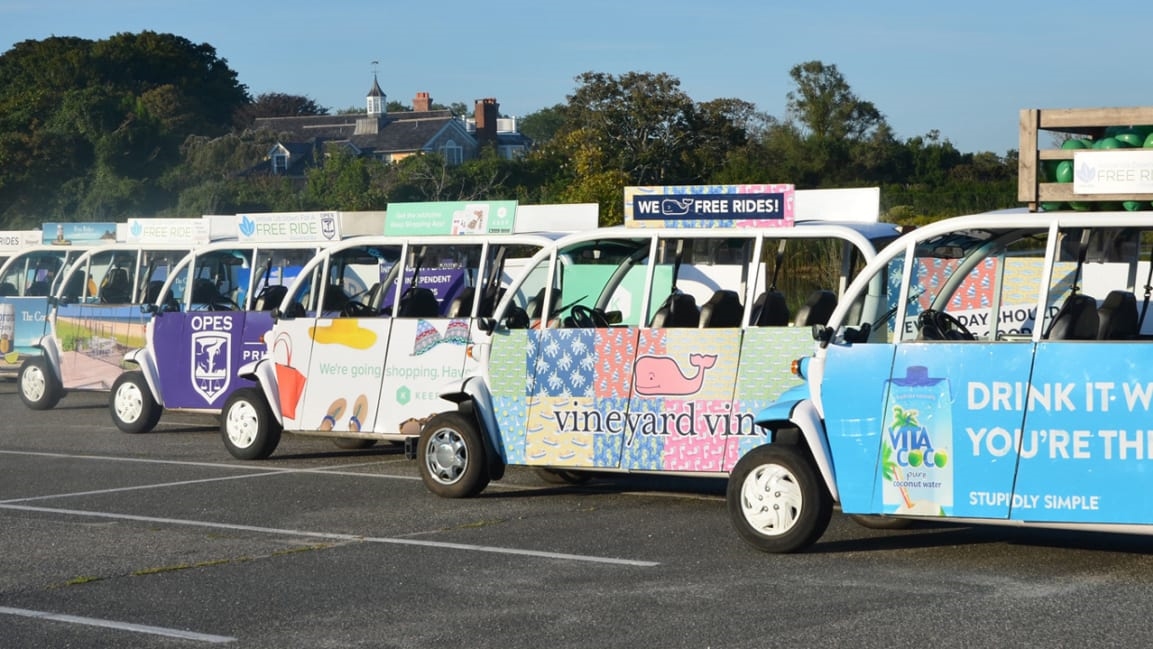How this electric vehicle ride-share company won the trust of cities without ‘disrupting’ them
Alex Esposito and James Mirras grew up in East Hampton, New York. “A small country town in winter and an overcrowded tourism destination in the summer,” Esposito describes it. Places like that suffer a particular scourge during those summer months—a serious lack of beach parking.
So in 2011, Esposito and Mirras came up with an idea to both decrease beachside car congestion and alleviate its harmful environmental effects. They started a fleet of electric cars to shuttle people back and forth from a parking lot far from the beach, and supported the company by selling ads on the shuttles. At the time, they had no idea their small business would turn into a national company.
Today, Esposito and Mirras run Circuit, a free, fully electric shuttle service that offers city residents short-distance rides in California, New York, Texas, Colorado, Illinois, New Jersey, South Florida, and Massachusetts. Circuit runs about 140 five-passenger cars, driven by close to 150 full-time employees. (The company’s only contractors are graphic designers and tech workers at the corporate level, Esposito says.)
In San Diego, the company branded as FRED (Free Rides Everywhere Downtown). It focuses on the “first mile, last mile” issue, the space between someone’s public transit commute and their office, or the distance between a parking lot and an entrance to a giant mall. FRED in San Diego only covers a small but populous swath of downtown. The service also isn’t available 24/7, like other ride-share apps. Its hours vary by city but tend to begin in the morning, somewhere between 7 a.m. and 11 a.m., and end in the evening, between 7 p.m. and 11 p.m.
After winning RFP to work with the city in 2016, FRED has become a staple in the downtown area. More than 250,000 riders have used the service per year, cutting more than 168,000 vehicle miles traveled and 110.5 metric tons of emitted carbon dioxide annually, the company reports. Ninety-three percent of its San Diego riders say that FRED “makes downtown better.” While that’s a self-selecting sample, it’s hard to imagine city residents objecting to decreased traffic.
In San Diego, Circuit also released a “pooling algorithm” that made for more efficient shared rides, which correlated with a significant spike in ridership between October 2018 and October 2019. “It was exciting to see how these little technical changes can really make a big impact in overall ridership, increasing ridership and decreasing wait times,” Esposito says. This is also a value add that differentiates Circuit from ride-share giants Uber and Lyft. “Because we’re in a smaller coverage area, you don’t feel like you’re going too far out of your way to pick somebody else up,” Esposito says.
To provide its services, Circuit has partnered with both cities and private developers. In San Diego, Circuit’s (aka FRED’s) partner is the city, while in Palm Beach Gardens, Florida, its partner is the Gardens Mall. That means its demographic changes by city, too. San Diego gets a lot of young professional commuters, and the Gardens Mall shuttle often caters to “an older demographic that might have trouble walking from their cars to the store,” Esposito says.
Though the service started as a fully ad-supported model, it now gets paid through municipal contracts in cities like San Diego; New Rochelle, New York; and Hollywood, Florida (where it’s branded as the Catch the Sun Shuttle). Circuit in turn shares a portion of its ad revenue with municipality and transit partners.
But is it worth it? Critics of the program in San Diego say that its costs are exceptionally higher than simply running a bus, and the city should invest the money from the contract into more public transit instead. The cost per rider on FRED is $4.40. The cost per rider on San Diego’s public transit is less than $3. Circuit argues that it’s providing a different, point-to-point service that requires higher costs, but can work together with transit and its costs are coming down.
Having graduated from Urban-X, a startup accelerator created by BMW’s Mini in partnership with Urban Us, Circuit has been able to “hone its mission,” Esposito says. “Ultimately, our goal is to reduce congestion and the harmful effects it has on the environment.” The company wants to do this without being as “disruptive” as some of its ride-share counterparts.
“I think ‘disruption’ is a buzzword in that can often lead to explosive user growth, whether that’s a WeWork scenario or an Uber or Lyft scenario,” Esposito says. “But there are responsible ways to use tech-enabled services that cities can get behind.”
(11)



